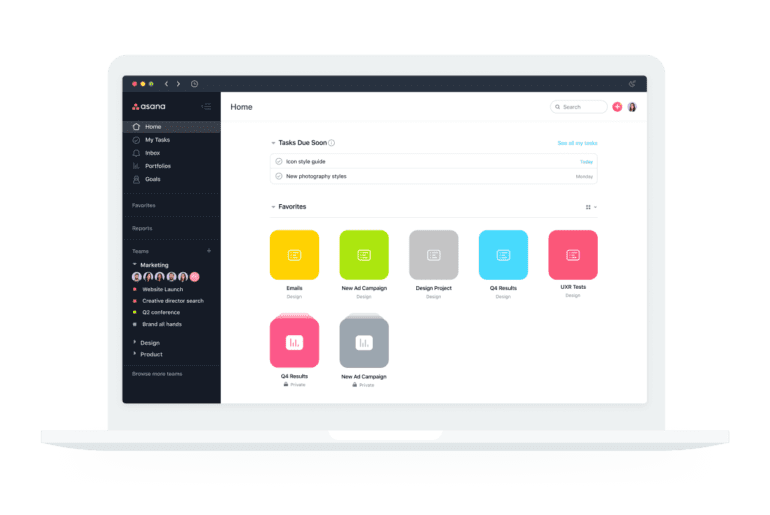TL;DR:
- Asana introduces new AI capabilities powered by Asana Intelligence to enhance decision-making and productivity.
- The features combine Asana’s Work Graph data model with OpenAI’s large language model (LLM) capabilities.
- Asana Intelligence monitors team capacity and changing business priorities, providing resource recommendations and identifying roadblocks.
- The capabilities automate plan creation, suggest workflow improvements, and offer a writing assistant for clearer communication.
- Instant summaries transcribe and condense key information from meetings, tasks, and comments.
- Asana Intelligence provides answers and insights, eliminating the need for meetings and interruptions.
- The work organizer generates custom fields, smart rules, and suggestions for project structure.
- Asana remains cautious about generative AI and ensures its features do not generate new content.
- Asana outlines AI principles, focusing on human-centered AI, accountability, choice, and transparency.
Main AI News:
Asana, the renowned work management platform, is introducing a set of advanced AI capabilities aimed at streamlining decision-making processes and boosting productivity. These new capabilities, driven by Asana Intelligence, build upon the company’s existing AI tools, which were integrated into the platform three months ago. By combining their robust Work Graph data model with OpenAI’s API-powered large language model (LLM) capabilities, Asana is empowering users to stay up-to-date with ongoing projects more effectively.
The close collaboration between Asana and OpenAI stems from the early investment made by Asana’s CEO, Dustin Moskovitz, in OpenAI and the reciprocal investment from OpenAI’s CEO, Sam Altman, in Asana. This partnership has not only kept Asana closely aligned with the advancements in LLM technology but has also informed the development of Asana’s Work Graph to optimize the utilization of this cutting-edge technology, as stated by Alex Hood, the Chief Product Officer at Asana.
To expedite decision-making processes, Asana Intelligence leverages AI capabilities to monitor team capacity and adapt to changing business priorities. It offers valuable resource recommendations that help teams achieve their goals efficiently. Furthermore, it identifies potential roadblocks and previously unseen issues that could impede progress toward company objectives.
In addition to facilitating decision-making, the new capabilities aim to enhance productivity by creating automated plans based on predefined goals. Asana Intelligence assists by suggesting and implementing workflow improvements, resulting in faster and more effective outcomes. Furthermore, Asana Intelligence acts as a writing assistant, improving the clarity and tone of messages and written communications. It should be noted that the tool does not generate content from scratch but rather refines pre-written content that is fed into it.
Moreover, Asana’s latest offering includes instant summaries that transcribe and condense action items and highlights from meetings, tasks, and comment threads. This feature ensures that crucial information is readily accessible, saving time and eliminating the need for extensive note-taking.
Asana Intelligence also empowers users to obtain answers and insights related to their projects. This eliminates the need for scheduling meetings or interrupting colleagues’ workflows for simple queries. Asana’s work organizer is another valuable addition, as it automatically generates custom fields, smart rules, and suggestions to bring structure to projects.
While embracing the potential of generative AI, Asana remains cautious. Alex Hood expressed concerns about the accuracy of content created by artificial intelligence and its impact on a company’s official plan of record. The challenge lies in ensuring that the content generated by AI tools is reliable and reflects day-to-day operations accurately. Asana addresses this concern by clarifying that none of its AI-powered features generate entirely new content for users.
Hood emphasizes the company’s commitment to summarizing the content and promoting efficiency rather than inundating users with new information that requires extensive review. Asana’s focus is on augmenting existing content and helping individuals streamline their work processes.
In conjunction with the introduction of Asana Intelligence, the company has unveiled its guiding principles for the application of artificial intelligence. Asana believes in using AI to assist people in achieving their goals and augmenting their contributions. They emphasize designing workflows and partnerships that promote seamless collaboration between humans and AI. However, Asana remains firm in its belief that individuals are ultimately accountable for their decisions. While Asana Intelligence enhances human decision-making, accountability rests with the users, and the product is designed with this in mind.
Asana also values transparency and offers users control over the role of AI in their work. They affirm that companies will have the option to disable AI technology when it becomes generally available. Safety and security are key considerations for Asana, and they prioritize these aspects when partnering with AI providers and developing AI solutions. The company is committed to transparency, ensuring openness about its partnerships, security practices, data collection, data protection, and management.
Conclusion:
Asana’s integration of AI capabilities through Asana Intelligence marks a significant advancement in the work management market. By combining AI-driven features with their Work Graph data model, Asana empowers users to make faster decisions, enhance productivity, and improve collaboration. Asana’s commitment to human-centered AI, accountability, and transparency sets a positive example for the industry, ensuring that AI technology is harnessed to augment human capabilities rather than replace them. This move by Asana will likely have a transformative impact on how businesses approach work management and decision-making processes.

